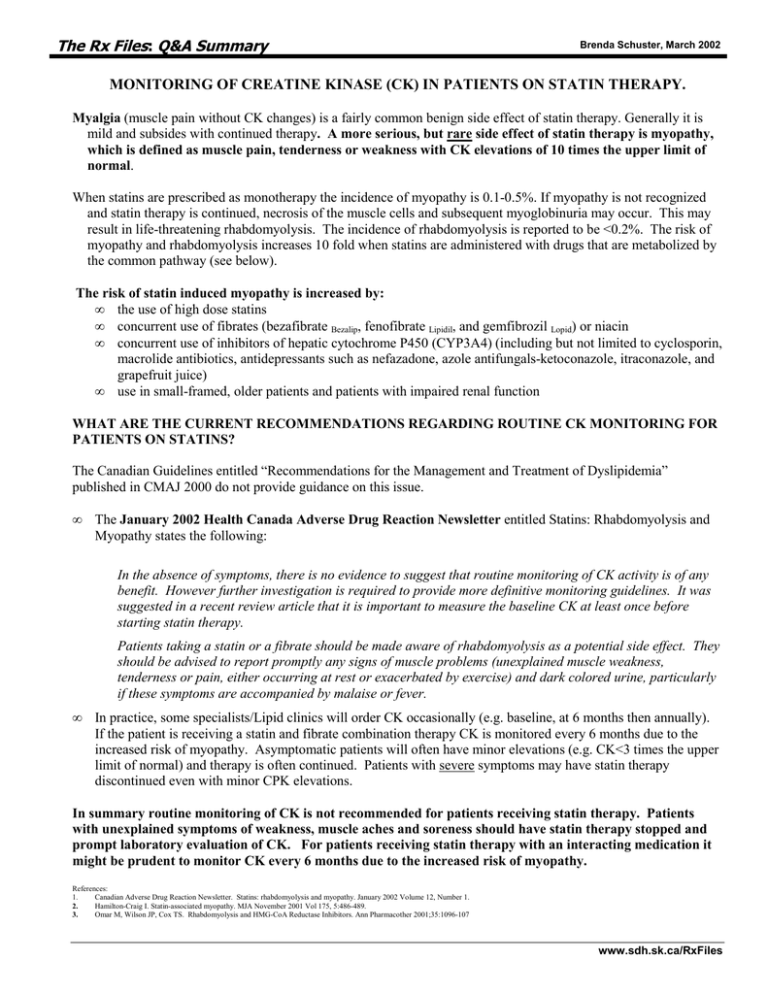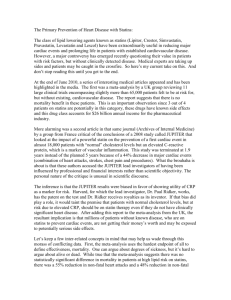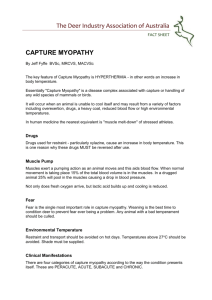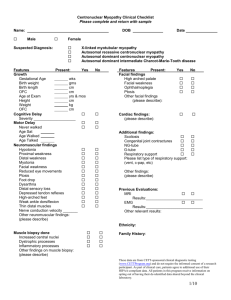Monitoring of Creatine Kinase (CK) in patients on Statin
advertisement

The Rx Files: Q&A Summary Brenda Schuster, March 2002 MONITORING OF CREATINE KINASE (CK) IN PATIENTS ON STATIN THERAPY. Myalgia (muscle pain without CK changes) is a fairly common benign side effect of statin therapy. Generally it is mild and subsides with continued therapy. A more serious, but rare side effect of statin therapy is myopathy, which is defined as muscle pain, tenderness or weakness with CK elevations of 10 times the upper limit of normal. When statins are prescribed as monotherapy the incidence of myopathy is 0.1-0.5%. If myopathy is not recognized and statin therapy is continued, necrosis of the muscle cells and subsequent myoglobinuria may occur. This may result in life-threatening rhabdomyolysis. The incidence of rhabdomyolysis is reported to be <0.2%. The risk of myopathy and rhabdomyolysis increases 10 fold when statins are administered with drugs that are metabolized by the common pathway (see below). The risk of statin induced myopathy is increased by: • the use of high dose statins • concurrent use of fibrates (bezafibrate Bezalip, fenofibrate Lipidil, and gemfibrozil Lopid) or niacin • concurrent use of inhibitors of hepatic cytochrome P450 (CYP3A4) (including but not limited to cyclosporin, macrolide antibiotics, antidepressants such as nefazadone, azole antifungals-ketoconazole, itraconazole, and grapefruit juice) • use in small-framed, older patients and patients with impaired renal function WHAT ARE THE CURRENT RECOMMENDATIONS REGARDING ROUTINE CK MONITORING FOR PATIENTS ON STATINS? The Canadian Guidelines entitled “Recommendations for the Management and Treatment of Dyslipidemia” published in CMAJ 2000 do not provide guidance on this issue. • The January 2002 Health Canada Adverse Drug Reaction Newsletter entitled Statins: Rhabdomyolysis and Myopathy states the following: In the absence of symptoms, there is no evidence to suggest that routine monitoring of CK activity is of any benefit. However further investigation is required to provide more definitive monitoring guidelines. It was suggested in a recent review article that it is important to measure the baseline CK at least once before starting statin therapy. Patients taking a statin or a fibrate should be made aware of rhabdomyolysis as a potential side effect. They should be advised to report promptly any signs of muscle problems (unexplained muscle weakness, tenderness or pain, either occurring at rest or exacerbated by exercise) and dark colored urine, particularly if these symptoms are accompanied by malaise or fever. • In practice, some specialists/Lipid clinics will order CK occasionally (e.g. baseline, at 6 months then annually). If the patient is receiving a statin and fibrate combination therapy CK is monitored every 6 months due to the increased risk of myopathy. Asymptomatic patients will often have minor elevations (e.g. CK<3 times the upper limit of normal) and therapy is often continued. Patients with severe symptoms may have statin therapy discontinued even with minor CPK elevations. In summary routine monitoring of CK is not recommended for patients receiving statin therapy. Patients with unexplained symptoms of weakness, muscle aches and soreness should have statin therapy stopped and prompt laboratory evaluation of CK. For patients receiving statin therapy with an interacting medication it might be prudent to monitor CK every 6 months due to the increased risk of myopathy. References: 1. Canadian Adverse Drug Reaction Newsletter. Statins: rhabdomyolysis and myopathy. January 2002 Volume 12, Number 1. 2. Hamilton-Craig I. Statin-associated myopathy. MJA November 2001 Vol 175, 5:486-489. 3. Omar M, Wilson JP, Cox TS. Rhabdomyolysis and HMG-CoA Reductase Inhibitors. Ann Pharmacother 2001;35:1096-107 www.sdh.sk.ca/RxFiles




